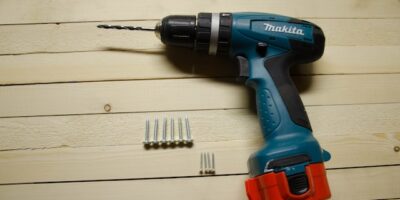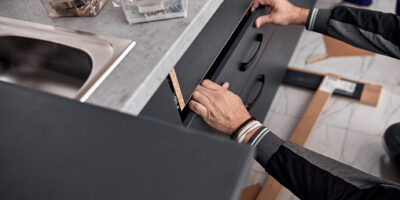The debate over primer’s usefulness has generated a lot of conflicting opinions on the internet. What I know about priming in painting comes from many years of practice. Priming a surface before painting it is often advised. But, is it possible to do painting metal without primer?
Primer is necessary for the paint to adhere to porous surfaces like wood, drywall, and plaster. Applying a primer before painting generates a seal that aids paint in adhering to the surface, which in turn produces a finish that is more polished, spotless, and uniform. As we go along, we will discover such possibilities!
Necessary Steps to Take Before Painting Metal
Metal paint as well as other coatings won’t last as long without proper surface preparation. Cleaning the surface to be coated thoroughly and using the appropriate primer are just two examples of surface preparation steps. It may make a big difference in the longevity of any paint job, whether you’re working with metal or brick.
Even the best metal primers and metal enamel paints might lose their luster if the surface isn’t properly prepared. Keeping with the theme, here is a quick checklist of five measures to take before painting metal. Here, have a look!
1-Clean the Metal Surface
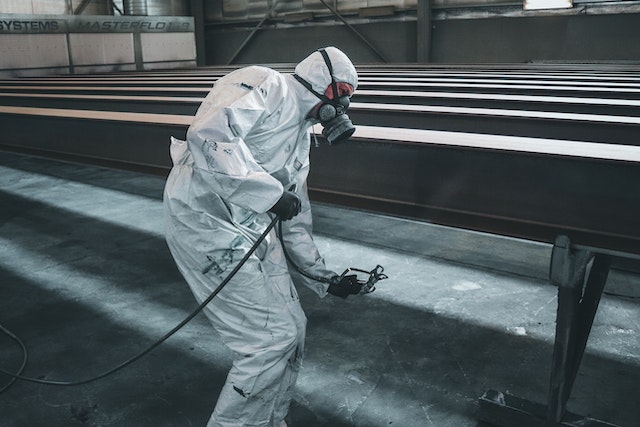
Metal must be clean and free of grease, old paint, or rust before it can be painted. Sandpaper or another suitable scraping instrument should be used to clean the metal surface of any dirt, grease, or other deposits. When tackling stubborn grease buildups, mineral spirits become invaluable. It is also possible to clean using a mild detergent solution, which may be more effective at removing stubborn grime.
2-Eliminate Loose or Peeling Paint
In order to apply new paint to a metal surface, any loose or peeling areas of the previous coat must be sanded down and removed entirely. The paint can be removed by hand using a wire brush, scraper, or sander. Power tool cleaning can get the job done quickly, but it can also polish the metal’s surface and cause adhesion issues.
3-Get Rid of Rust Deposits
Metal paint will adhere better if rust is removed first. Light corrosion can be repaired by brushing, sanding, and using a high-quality primer with rust-inhibiting qualities. If you try to paint a rusted surface, you’ll wind up harming the paint, and it will eventually rust, too.
4-Use Appropriate Primers
Priming is required before metal paint can be applied. When painting metal, primers like rust inhibitors, galvanized primers, or iron oxide primers are preferable over water-based primers. Putting on the primer right after you’ve cleaned the surface might assist prevent any more dust or flash rust from settling in.
Should Metal Be Primed Before Being Painted?
Corrosion forms a powdery oxide layer on top of all metals. As time passes, rust will eat through iron and steel completely. Painting aluminum can be difficult because a thin coating of oxide powder accumulates on the surface to prevent corrosion. After 48 hours, the adhesion-promoting characteristics of most primers begin to diminish. While a primered surface is still preferable to none at all, it is much better when you paint over it.
If Metal Isn’t Primed Before Painting, What Happens?
The flaking of paint is a symptom of a paint that has reacted badly with the metal underneath. Painting directly onto a metal surface requires special paint that specifically specifies it can be used for this.
You can lessen the likelihood of peeling by using paint specifically formulated for metal. But using an aluminum primer will reduce costs. Instead of being limited to one pricey metal paint, you can save money by priming the surface and then applying whichever color you like.
Why Is Primer Needed For Metal?
In comparison to specialty paints that don’t require a primer, metal primer is more cost-effective. A number of materials, including wood, plaster, or metal, require the use of primers prior to receiving a coat of paint. The more primer you use, the less expensive the paint will be.
Applying a metal primer before painting will prevent rust from forming as a result of the paint’s reaction to the metal. Using a primer prior to painting will strengthen the paint’s connection to the metal and protect it from scratches and chips.
Metal Painting Process Guide
Now that you’ve got some good metal paint and primer, you can start painting. Make sure everything is where it needs to be, the metal surface is ready, and you have everything you need to get started before you even touch a tool. It’s important to put in the time and effort to ensure success to avoid squandering resources.
🗹 Workspace Prep
Well-planned workspace is vital for a pleasant painting experience, just as an organized desk is crucial for maximum productivity. Make sure you don’t get dust on your paint by keeping your desk clean and having all your supplies close at hand. Working in a well-ventilated location is especially important when using oil-based paints that include solvents that emit fumes. When cleaning and prepping a metal surface for painting, it’s also a good idea to use a mask and eye protection.
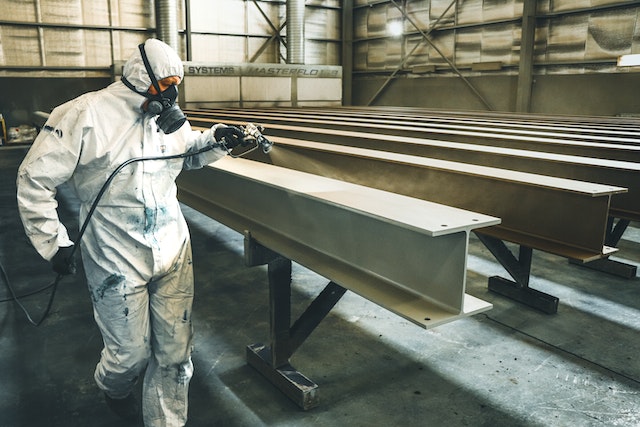
🗹 Preparing a Metal Surface for Cleaning
It is essential to thoroughly clean and prime the surface for a flawless, glossy metal finish. Look closely at the metal to see if there is any flaking paint, unclean markings, or grease. To avoid breathing in harmful particles, cleaning the surface should be done in an open location.
Carefully scrape off any peeling or flaking paint with a scraper, paintbrush, and sandpaper. It’s been suggested that you use a power tool, but you should proceed with caution because doing so can harm the metal’s surface and prevent the paint from sticking properly.
🗹 Metal Priming
If the metal will be exposed to the elements or moisture, priming the surface is a crucial first step. Water-based metal paints are not water-resistant, so priming the surface before painting is essential if you don’t want the metal to rust.
Oil-based rust-inhibiting primers are the best choice. Primer with galvanized iron helps metal surfaces better absorb paint. Primers made of zinc chromate or iron oxide are suitable for use when painting iron or steel. A primer is recommended for all metal surfaces, whether they will be exposed to the elements or not.
🗹 Time for Painting
It’s time to paint or stain your metal objects, whichever you like. If your paint is really thick, you may need to apply many layers. Make sure the previous one is completely dried before moving on to the next layer. Do not touch the painted metal until the next day after applying the final layer.
Once the last coat of paint has dried, a lacquer sealer can be applied for further defense and durability. Putting on a final coat of varnish after painting can give your project a professional sheen, but it is entirely optional. Painting metal can seem like an insurmountable task, but with proper planning and equipment, you can complete any DIY project with ease.
Tips for Finishing a Paint Job Without Priming
The paint and its substrate are both factors. Primers of a sort are typically included in modern metal paints, which prepare the surface for painting. The primers and paints sold separately are less expensive in the long run, but “Primed Paints” mean you may only need one coat of paint.
Applying two coats of “Primer Paint” to a metal surface is still recommended for the best coverage and uniformity. The adherence may be satisfactory even if you neglected to use a priming coat, provided the surface was clean and the paint was of sufficient quality.
How To Fix Paint Metal Without Primer
Without primers, rust, oil, and water traces can cause bubbles and peel in painted metal. Occasionally, paint damage can be fixed by lightly sanding the dry area, then touching it with fresh paint.
It would be wasteful to sand down the entire surface of the damaged paint and only covers a small portion of it. It’s preferable to start over if the paint is flaking and bubbling everywhere.
Painting Metal Without Primer – Use Direct to Metal (DTM) Paint
The metal surface has traditionally presented greater difficulty for painting than other surfaces. Generally speaking, surface tension is to blame for the incompatibility of some coatings with metal. Coatings that normally work well on other materials, such as wood or gypsum, tend to peel off of metal.
Furthermore, metal surfaces are prone to oxidation and rust, which presents complex safety and design difficulties. Therefore, before starting to paint, it is essential to plan out the best approach. It’s important for coaters to think about both surface preparation and paint type when applying a coating on metal.
What is DTM Paint?
The acronym DTM accurately describes its primary function. This coating is meant to be sprayed directly onto a metal surface, providing both aesthetic enhancement and protection from the elements. In addition to being a primer as well as a topcoat in one, this coating type is designed with very little in the way of surface preparation.
DTM paints are designed to work well with metal, which eliminates many of the complications that arise with using regular paints on metal. There are various real-world applications for DTMs in projects.
In addition to the aforementioned options, the present market for DTM paints also includes:
- Acrylic DTM Formulation Based on Water
This DTM’s low volatile organic compound (VOC) content makes it safe for the environment and makes it non-flammable. That is correct whether you are inside or outside.
- Solvent-Based Diffusion Through Material
There is a common perception that this coating type is somewhat simpler to apply. On the other hand, it typically has more VOCs, making it less eco-friendly. In addition, most solvent-based paints can catch fire.
When Should You Use DTM Paint?
It is possible to use DTM paints both indoors and outdoors on metal because they are waterproof. Because of its excellent adhesion properties, water-based acrylic paint can be utilized as a coating for a wide variety of metals. The fact that it doesn’t soak up moisture or deteriorate in the sun makes it a great choice for protecting buildings that are out in the elements.
An additional benefit of DTM paints is the protection they offer against rust and corrosion, which can be an architectural plus for metal structures. The present popularity of comparable coatings is due in part to their versatility and simplicity of application.
Does DTM Paint Need a Primer?
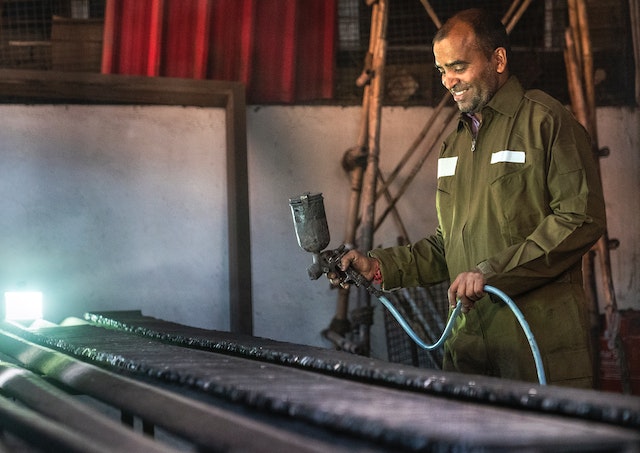
This sort of paint, known as DTM paint, gets its name from the fact that it does not need a primer. DTM is a primer/topcoat hybrid that can be applied with little in the way of priming or sanding. This formulation streamlines the process of applying DTM to metal, saving both time and money for the applicator.
Using this method, fewer coats of paint are required when using this method, and the work can be done in half the time. It can be a problem to choose a primer that works with your paint. With DTM paint, you won’t have to waste time looking for a good primer that works well with your preferred topcoat.
Benefits of DTM Paint
What are the advantages of using DTM paint? Aside from painting metal without primer, we outline everything a coating applicator can anticipate from a DTM solution.
- Saving money
- Reduces wasted time
- Multifaceted usefulness
- Extremely long-lasting
- To prevent rust and corrosion
- Adaptable to a wide range of climates
How Do I Use DTM Paint?
Even though DTM coatings might make the coating process easier, there are still important considerations to bear in mind. Due to the two-in-one nature of the coating, the priming stage of surface preparation is unnecessary.
The substrate that will be coated must be properly prepared, nevertheless, if DTM is to have its full impact and produce an aesthetically acceptable finish. Good adherence requires a clean surface before application.
🖌 Paint and Surface Preparation
A quick wipe clean with a moist cloth should be all that’s needed to get rid of any lingering dirt or debris. But acetone can be utilized to get rid of oil and grease. To get the best results from any painting project, always mix the paint before you start applying it.
Oil, grease, filth, and flaky rust would all need to be removed for this sort of cleaning to be effective. It is possible to use a variety of methods to achieve this level of tidiness. Rust and peeling paint can be scrubbed off the substrate with a wire brush.
🖌 The Application Process

It’s time to apply the coating now that the surface has been cleansed and the paint has been properly mixed. The most common methods of applying DTMs are brushes, rollers, and sprayers. Although there are a few other ways to apply this, spraying is preferred because it is more convenient for use on metal.
Setting the pressure at 1500 psi and using a 0.015″ sprayer tip. When using a product, make sure to record how much you applied and how thick it was. The final coating may look very different depending on the thickness used.
Rates may differ in practice due to factors like the technique of application and substrate. Coating thickness, temperature, humidity, or ventilation are all variables that affect drying time. Once you’re done, just use water to clean up your tools and materials.
Frequently Asked Questions
Q: In what ways can paint be applied most efficiently on metal?
If you’re looking for advice on which metal paint to use for a specific project, this article has you covered. The durability and efficacy of metal paints depend on the type of metal used. Oil-based paints are ideal for use on outside surfaces and other areas that may be exposed to rain and humidity.
However, drying time for these paints is often quite lengthy, and they emit a somewhat disagreeable odor when drying. Although equally effective, water-based paints necessitate an additional step—an oil-based primer—to prevent rust.
Q: Must I sand the metal surface before painting?
It is recommended that any remaining residue, old paint, and corrosion be sanded off the metal before proceeding with the preparation process. Sanding creates a uniform and smooth surface, which facilitates paint application and increases the paint’s durability.
Q: How many coats do I need?
Whenever working with metal paint, it is vital to pay attention to the particulars stated by the manufacturer. To get the desired effect, multiple coats may be required. Nonetheless, in most cases, two layers of primer or three layers of paint will do the trick.
Q: Can I paint over rust?
Rust can be used as a paintable surface for metal, but only if it thoroughly adheres. Before applying paint, sand down the surface and coat it with a rust-resistant primer and similar chemicals that will prevent rust.
Finishing Touches
There is no difference in the procedures or safety measures required for painting a metal gate or door. Remove any dirt, grime, loose paint, flaking paint, and corrosion from the metal surface. Apply a coat of primer last, and then you may paint the metal.
But, it is good to know that directly painting metal without primer is possible. Through the use of DTM technology or Direct Metal paint, you can do so. Yet, it would still be your choice. This means it is up to you if you want to prime metal before painting or if you want to go straight to painting metal without primer.

